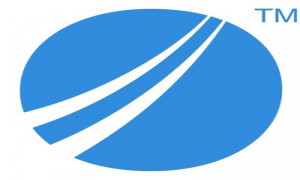How to install and configure TIBCO Business Connect | TIBCO Software

TIBCO BusinessConnect Installation and Configuration
Pre-installation Tasks
You need to install Unlimited Strength JCE Policy files and FESI EcmaScript Interpreter, and also set up database information before installing TIBCO Business Connect.
Installing Unlimited Strength JCE Policy Files
To use TIBCO Business Connect security features, you must download and install the following two JavaTM Cryptography Extension (JCE) Unlimited Strength Jurisdiction Policy files:
Java 1.7.0 Java Cryptography Extension (JCE) Unlimited Strength Jurisdiction Policy Files 7.0. This is required for JRE 1.7.0.
To download and install the policy files, perform the following steps:
1. Download the required files from the following web sites:
— Windows, Sun Solaris, HP-UX, Linux:
http://www.oracle.com/technetwork/java/javase/downloads/index.html
2. Once you have downloaded the jce_policy-7.zip file, unzip it and place the files US_export_policy.jar and local_policy.jar into one of the following directories:
— TIBCO_HOME\Tibcojre\1.7.0\lib\security
— TIBCO_HOME\Tibcojre64\1.7.0\lib\security (for 64 bit platform).
Installing FESI EcmaScript Interpreter to Support Custom Scripts
If you plan to use custom scripts, perform the following steps:
1. Download the FESI EcmaScript Interpreter version 1.1.5 from the following location:
http://www.lugrin.ch/fesi/download.html
2. Extract the fesi.jar file from the fesikit-1.1.5.zip file and store it in the
TIBCO_HOME\bc\version\lib\is directory.
Setting up Database Information
TIBCO BusinessConnect uses a database to store the audit log, the non repudiation log, the runtime data store, and the configuration store. You can assign these logs/data stores to different databases, or you can use one database for all.
The CONNECT and RESOURCE permissions are not granted as default parameters, these two permissions are required to give users when setting up a database. For run-time operations, the CONNECT and default permissions are sufficient.
Configuring Oracle, DB2, SQL Server, and MySQL
All databases except for MySQL are installed according to the corresponding software vendor’s instructions and contain the necessary drivers. All databases users except for MySQL users are supposed to be schema owners.
The supported Checkpoint databases are Oracle, SQL Server, and DB2.MySQL is not supported
Oracle Client Library Path Usage
If you are planning to use the Oracle OCI drivers, you must specify the Oracle Client Library path. When dealing with the TIBCO BusinessConnect configuration UI, you must specify this path in the TIBCO Administrator .tra file.
Depending on the platform where TIBCO Administrator is installed, different library paths are needed to be appropriately updated.
The drivers are stored under the TIBCO_HOME\tpcl\version\jdbc directory.JDBC (Type 4) drivers are needed for DB2, Oracle, and MSSQL databases.
To be consistent, you need to define the following environmental variable as follows:
1. Set Tibco.env.ORACLE_CLIENT_PATH=<Oracle Client native librarypath>.
2. Prepend %ORACLE_CLIENT_PATH% to the variables PATH, LD_LIBRARY_PATH, SHLIB_PATH and LIBPATH.
The value should point to the Oracle native client libraries directory as follows:
• On Windows This is typically the ORACLE_CLIENT_HOME/BIN directory, such as C:\oracle\product\10.2.0\client\BIN.
• On UNIX This is typically the ORACLE_CLIENT_HOME/lib directory or the ORACLE_CLIENT_HOME/lib32 directory.
TIBCO BusinessConnect PostInstallation Tasks
Perform these tasks after installing TIBCO BusinessConnect:
• Manage Permissions: In order to establish permissions for the TIBCO BusinessConnect Super user and other users, you need to set up permissions.
• Create a new installation
• Manage an existing installation: Once the installation is configured, you can edit its parameters. One additional tab for protocol activation becomes available
• Configure a database: A database must be set up before TIBCO BusinessConnect is installed, and afterwards the connection to this database is configured as a part of the new installation configuration. However, later you can change connection defaults for the installed database, as well as install additional databases for the system.
As TIBCO Enterprise Message Service (EMS) libraries are no longer shipped with TIBCO Runtime Agent after version 5.8, run traUpgrade Manager with –ems option to update the TIBCO configuration.tra files in case TIBCO BusinessConnect uses TIBCO EMS transport. This must be performed after the installation of TIBCO BusinessConnect and the domain creation. The traUpgradeManager utility will update the path and class path in the .tra files by adding the location of the TIBCO EMS libraries.
For example:
traUpgradeManager -path TIBCO_HOME -ems TIBCO_HOME/ems/version.
Creating a New Installation
The TIBCO BusinessConnect Super User configures a new installation as follows:
1. Log in to TIBCO Administrator.
2. Click BusinessConnect in the left panel.
An error message is displayed: The BusinessConnect Installation has not been configured.
3. Click Manage to set up the configuration.
Two tabs are available to manage an installation:
— Configuration Repository
— Protocol Plug-In Activation: Once an installation has been created, a new tab for managing protocol plug-ins becomes available.
TIBCO BusinessConnect software does not appear immediately upon launching TIBCO Administrator for the first time. Sometimes, it needs several minutes before BusinessConnect is displayed in the left panel of TIBCO Administrator after installing TIBCO BusinessConnect.
Error [Administrator] AESDKJ-0000 [http-bio-7990-exec-38] java.lang.NoClassDefFoundError: javax/jms/JMSSecurityException
at com.Tibco.ax.gui.bcwebadmin.BCGroupingConsole.init(BCGroupingConsole.java:436)
at com.Tibco.administrator.ConsoleTreeModel.getConsole(ConsoleTreeModel.java:105)
at com.Tibco.administrator.ConsoleTreeModel.getChildren(ConsoleTreeModel.java:209)
at com.Tibco.wfc.TreeView.a(TreeView.java:559)
at com.Tibco.wfc.TreeView.findPathToNode(TreeView.java:546)
at com.Tibco.wfc.TreeView.selectNode(TreeView.java:263)
at com.Tibco.administrator.ApplicationFrame$ApplicationFrameset$ConsoleFrameset.showConsole(ApplicationFrame.java:165)
at com.Tibco.administrator.ConsoleSelectorPane.setCurrentConsole(ConsoleSelectorPane.java:156)
at com.Tibco.administrator.ConsoleSelectorPane$6.execute(ConsoleSelectorPane.java:274)